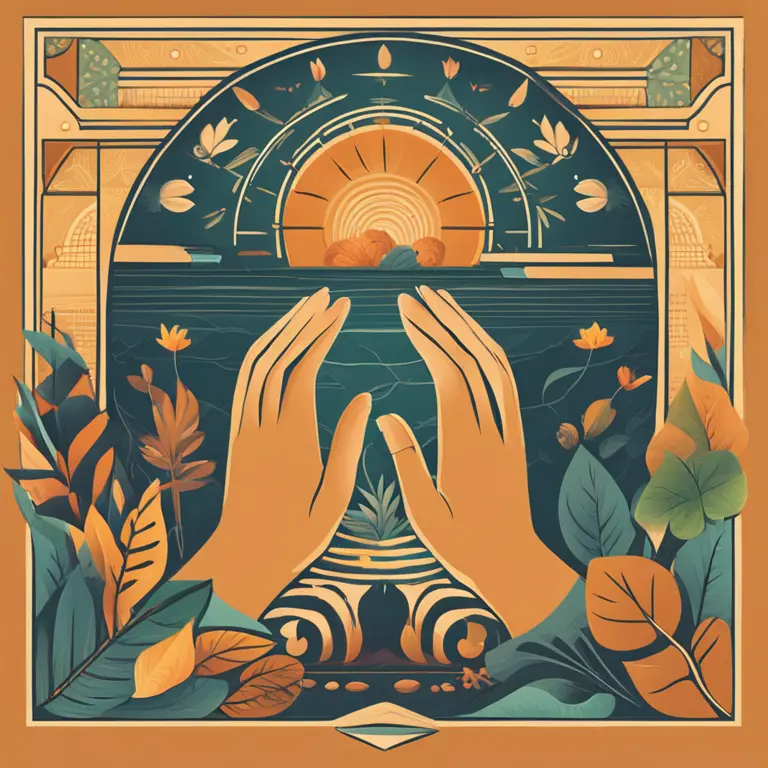
The Essence of Palmistry for Women: Reading the Correct Hand
Discover the intricacies of palmistry for women and learn which hand offers the most revealing insights into personality, fate, and future in this detailed guide.
article by Nora Pennington
Palmistry's Roots and Female Insight
Palmistry is an ancient practice, rooted in various cultural traditions, as a method to divine one's personality and future. When it comes to reading palms, especially for females, a common question arises: Which hand should be read? Traditional palmistry dictates specific roles for each hand. In this exploration, we’ll delve into the nuances of female palmistry to understand the significance of the right and left hands in revealing the tapestry of life's potential pathways.

Right Hand – The Path Forward
For women, the right hand typically signifies the conscious, outward life and how one deals with the external world. It is considered the 'active' hand and reflects achievements, aspirations, and the embodiment of experiences gained over time. When a palmist examines the right hand of a woman, they seek to interpret the active choices and the potential future that these decisions may forge.

Left Hand – The Innate Self
In contrast, a woman's left hand is perceived to hold the key to the inner self, the subconscious, and the potential she was born with. This hand may reveal inherent traits, emotional reactions, and deep-seated desires. It represents what one keeps hidden or the potential yet to be actualized. Some schools of thought suggest that the left hand is what one is born with, and the right hand is what they make of it.

Modern Palmistry – A Dynamic Approach
Contemporary palmists often embrace a more fluid approach to hand selection, considering both hands as complementary. The modern method proposes that a complete reading for a female should involve an analysis of both hands to grasp the full spectrum of personality traits, life challenges, and strengths. This comprehensive view aligns with the belief that the dominant and non-dominant hands together narrate an individual’s past, present, and future.
Dominance and Ambidexterity
The concept of hand dominance plays a role in determining which hand to read; however, it’s not a hard and steadfast rule. For instance, if a woman is left-handed, the interpretative roles of the hands might switch, making the left hand the active one. In cases of ambidexterity, where both hands show equal proficiency, a palmist might consider both as active hands, further enriching the reading with insights from two dynamic perspectives.
Palmistry Today – Evolving Perspectives
As palmistry continues to evolve, it becomes increasingly personalized. Rather than strictly adhering to traditional rules, many palmists now take into account the individual's life experiences, their cultural background, and personal beliefs when deciding which hand to prioritize. This approach ensures that interpretations are adapted to the lifestyle and perspectives of the modern woman, making palmistry a more relevant and insightful tool in the journey of self-discovery.
Practical Tips for Aspiring Palmists
Aspiring palmists should consider starting with the dominant hand for a general life overview and then referring to the non-dominant hand for deeper, more innate understandings. However, it is important to observe the lines and shapes on both hands and note significant differences, as these can highlight areas of life where a woman has grown or changed significantly.
Published: 1/29/2024
Modified: 1/29/2024
More predictions
Come back here soon to learn more about yourself and your future


The Significance of Vertical Lines in Palmistry
Discover how vertical lines on the fingers relate to personal qualities and potential life paths in the practice of palmistry.


The Mystery of the Palmistry Health Line
Decode the mysteries of your vitality through the intricate details of the palmistry health line.


The Secrets Hidden in Your Palm's Health Line
Discover the significance of the health line in palmistry and how it may offer insights into your well-being and vitality.